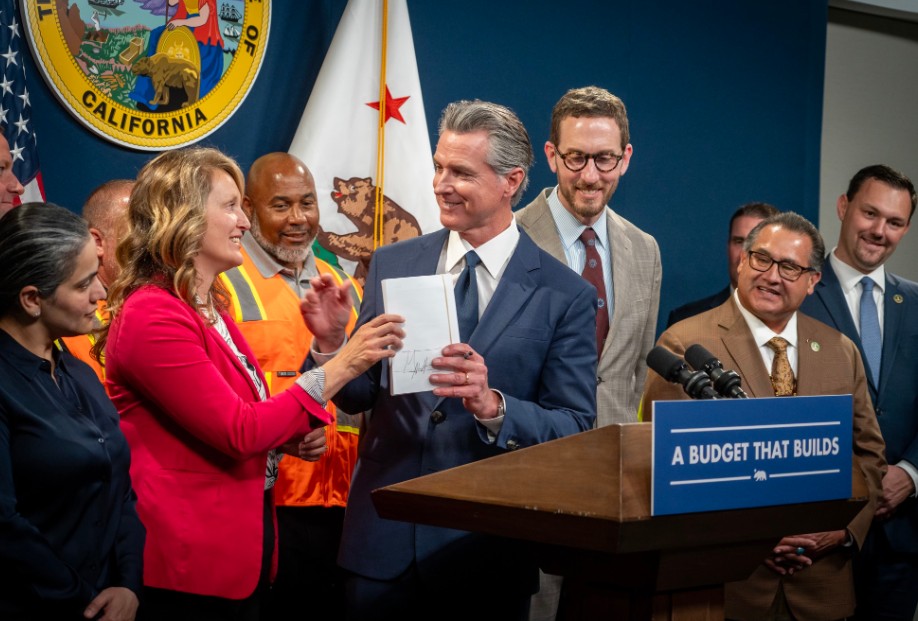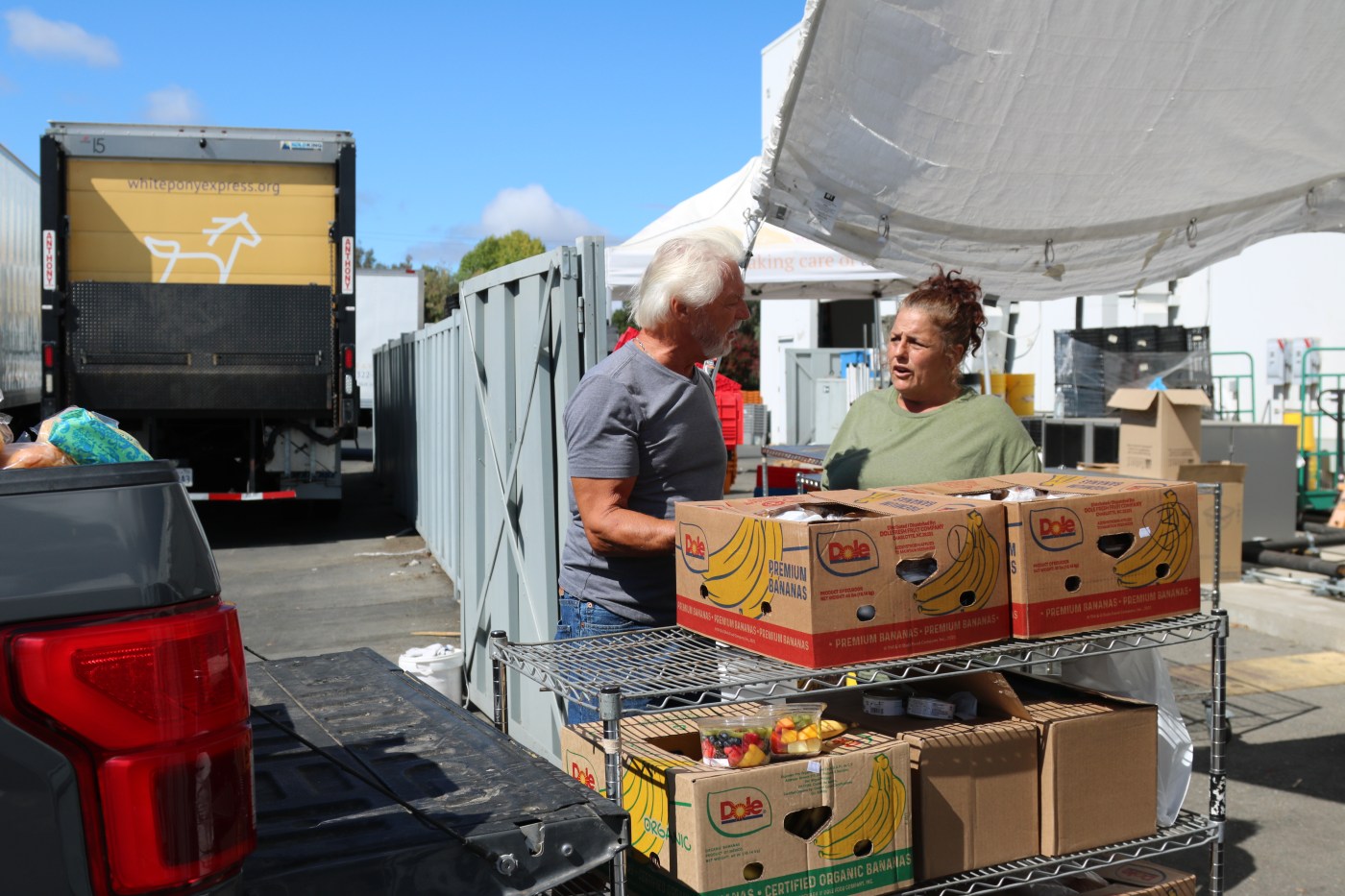Late Monday, Gov. Gavin Newsom signed two major bills to change one of the state’s oldest and most powerful environmental laws. The measures are designed to make it easier to build more housing in a state that has some of worst shortages and highest prices in America.
Newsom called the bills the “most consequential housing reform that we’ve seen in modern history in the state of California.” But the legislation has left some environmental groups and labor unions angry. Here are the details:
Q: What are the politics behind all this?
A: The bills passed with overwhelming bipartisan support in Sacramento, where Democrats have large majorities in the Senate and Assembly.
Multiple studies over the last decade have concluded that California is failing to build enough housing to keep up with demand, leading to high prices. After Democrats lost the presidential election and both chambers of Congress in November, polls showed that cost-of-living issues like the price of rent, gasoline and groceries were among the top concerns of voters. Newsom is expected to run for president in 2028, and has fallen short of housing goals he announced when he first became governor.
Q: What bills did Newsom sign this week?
A: Assembly Bill 130 and Senate Bill 131.
Q: What is the landmark law they rewrote?
A: The California Environmental Quality Act, known as CEQA.
Q: Why is it such a big deal?
A: CEQA has been one of the most stringent environmental laws in the nation for more than 50 years. Former Gov. Ronald Reagan signed it in 1970. Back then, another Republican, President Richard Nixon, also was signing key environmental laws amid a national push to reduce pollution after disasters like the 1969 Santa Barbara oil spill and the 1969 fire on the Cuyahoga River in Ohio, and the first Earth Day.
Q: What does CEQA do?
A: It requires state and local agencies in California to study and publicly disclose the effects that significant new projects will have on wildlife, noise, air pollution, greenhouse gas emissions, archaeological sites and other factors. Those studies are called an “environmental impact report” or an EIR. Developers must then offset or reduce those impacts.
Q: So what’s the problem?
A: The law has been hailed by environmental groups as a cornerstone of public participation that helps ensure everything from power plants to new highways are built in the least environmentally harmful way.
But over time, opponents have increasingly filed CEQA lawsuits to block and delay all kinds of projects, often having little to do with environmental issues. Unions have threatened to sue to force solar power developers to use union labor. Neighbors in Berkeley recently delayed construction of a much-needed new UC dormitory for three years, claiming the students would create noise pollution. Bike lanes in Oakland, San Diego and Los Angeles have faced CEQA lawsuits. Neighbors sued to block construction of a food pantry last year in Alameda. In San Jose in 2012, the owner of a gas station sued under CEQA when a competing gas station across the street attempted to add four new pumps, delaying the project for three years and costing him thousands in legal fees.
Last year in San Francisco, the board of supervisors used a CEQA challenge to hold up plans for 500 new homes on a vacant lot near Market Street one block from a BART station when neighbors threatened to sue under CEQA claiming it would cause gentrification.
“This is what we’ve all been waiting for — a long-overdue step to stop CEQA from being weaponized against housing,” said Assemblywoman Buffy Wicks, D-Oakland. “With AB 130, we’re taking a major step toward building desperately-needed homes faster, fairer, and with more certainty.”
Q: What do the new laws actually do?
A: AB 130 allows “infill development” in urban areas to be built without needing CEQA review if the property is less than 20 acres, and surrounded on three sides by other urban uses. The goal is to build more apartments.
It was endorsed by business groups like the Bay Area Council, unions like the United Brotherhood of Carpenters and some environmental groups, like Greenbelt Alliance, along with the League of Women Voters, AARP and California YIMBY (Yes in My Back Yard).
Q: What about the other bill?
A: SB 131 was more controversial. Largely written by State Sen. Scott Wiener, D-San Francisco, it allows for residential zoning changes without CEQA review. It also exempts other projects: farmworker housing; day care centers, food banks, small water systems in low-income communities; rural health clinics, wildfire safety projects like fuel breaks; projects in parks; rail stations and maintenance facilities for high-speed rail; and “advanced manufacturing facilities” for semiconductors, biotechnology and nanotechnology on land zoned for industrial uses.
Q: Who is opposed?
A: Weiner says California has lost out on billions in federal funding to assist computer and clean energy industries passed during the Biden administration to states like Texas because projects here take too long to build. Environmental groups and some unions, however, blasted the bill as a last-minute deal that could cause more pollution.
“This half-baked policy written behind closed doors will have destructive consequences for environmental justice communities and endangered species across California,” said Jakob Evans, a senior policy strategist with Sierra Club California.
Some unions agreed. The Teamsters, United Auto Workers and United Steelworkers wrote a letter to lawmakers in which they said SB 131 “would give carte blanche to companies like Tesla to expand without any environmental oversight.”
Q: What happens next?
A: Weiner has said he’ll work with opponents to make adjustments in the coming months. Although many experts say the bills will make it easier to build new housing in cities, there are still other factors that could keep costs high — from land prices to interest rates to potential hikes in steel and other building materials’ prices due to President Trump’s tariffs.





